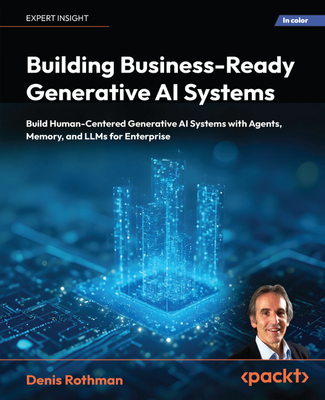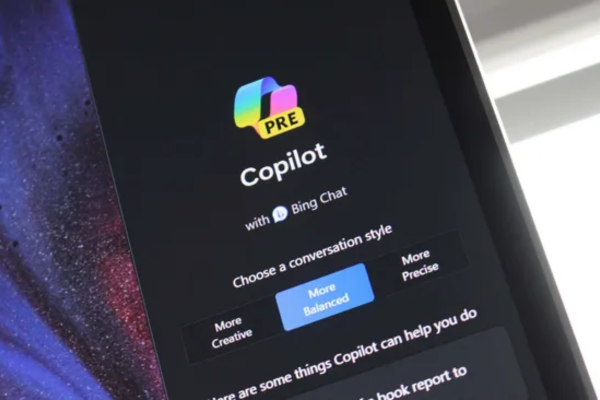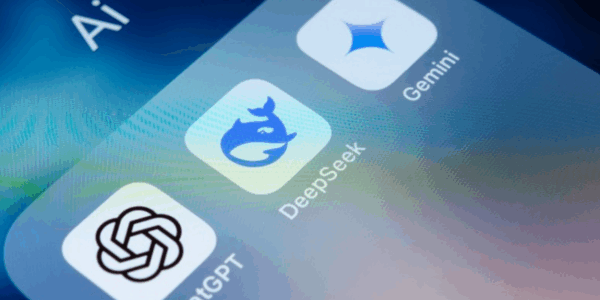New AI Controller Architecture – Think Beyond Prompts
By LLM Expert Insights, Packt
Introduction
This week, artificial intelligence is driving seismic shifts across industries. OpenAI’s GPT-5 prepares for launch, supercharging Microsoft Copilot and powering ChatGPT’s new Study Mode for deeper learning. Meta’s stock skyrocketed as its AI investments pay off, while Tesla’s $16.5 billion chip deal with Samsung signals a major play in semiconductor dominance. Meanwhile, Gulf nations are doubling down on AI as their “new oil,” fueling a high-stakes race for technological supremacy.
As AI accelerates innovation and economic transformation, traditional consumer sectors face growing disruption—highlighting a widening divide between the tech-powered future and legacy industries struggling to adapt. The message is clear: adapt or be left behind.
In today’s issue:
- 🧠 Expert Deep Dive: Denis Rothman breaks down how to build self-directed AI systems using GPT-4o and GenAISys—enabling smart task orchestration without explicit commands.
- 📅 August AI Event Watch: From DeepSeek in Production to Ai4, KDD, and AI Risk Summit—key gatherings explore GenAI deployment, real-world risks, and scaling next-gen systems.
- 🧪 OpenAI’s GPT-5 Set to Launch: Launching this August with smarter reasoning, mini/nano models, and turbocharged Microsoft Copilot integration for seamless AI assistance.
- 📘 ChatGPT Gets Study Mode: No more quick answers—this educator-designed feature promotes deep learning through step-by-step guidance and critical thinking prompts.
- 🤝 Tesla & Samsung Ink $16.5B Deal: A $16.5B partnership to produce Tesla’s AI6 chips in Texas—boosting Samsung’s foundry biz and challenging TSMC’s dominance.
- 📈 Meta’s AI Bet Pays Off: With superintelligence ambitions and heavy infrastructure bets, Meta’s stock surges 11%—proving AI pays off.
- 📖 Expert Insights Recap: Discover how to match vague user intent to the perfect task—no direct prompts needed—for truly adaptive AI systems.

From the Packt Bookshelf: Building Business-Ready Generative AI Systems by Denis Rothman
In the fast-changing world of generative AI, developing truly autonomous systems demands careful orchestration and advanced intent recognition.In this exclusive preview from his latest book, Building Business-Ready Generative AI Systems, AI expert and visionary Denis Rothman presents a hands-on method for designing AI controllers that independently choose and execute tasks without direct commands.
Denis demonstrates how GPT-4o’s semantic analysis features enable AI systems to intelligently connect ambiguous or indirect user inputs with the right action—whether sentiment analysis, semantic search, or other tasks.
Let’s take a look at how this works behind the scenes.
Selecting a scenario
An AI controller’s primary role is determining the appropriate action upon receiving input (from either a system or human user). Task selection opens up numerous methodologies, which we’ll explore in the book. These can be grouped into two main approaches:
-
Using an explicit task tag to activate an instruction. This tag can be a context in a generative AI model and expressed flexibly within a prompt.
-
No task instruction in the prompt, but instead a repository of scenarios from which the AI controller selects based on semantic textual similarity.
Here, we’ll focus on the second, more proactive method. We’ll test two prompts without instructions, task tags, or hints about the expected action. While we’ll cover explicit methods with task tags later, a GenAISys AI controller must be capable of autonomous decision-making in certain cases.
The first prompt is an opinion on a movie, implying that a sentiment analysis might interest the user:
if prompt==1:
input = “Gladiator II is a great movie although I didn’t like some of the scenes. I liked the actors though. Overall I really enjoyed the experience.”
The second prompt is a fact, implying that a semantic analysis might interest the user:
if prompt==2:
input = “Generative AI models such as GPT-4o can be built into Generative AI Systems. Provide more information.”
To provide the AI controller with decision-making capabilities, we will need a repository of instruction scenarios.
Defining task/instruction scenarios
Scenarios are predefined instruction sets stored in a GenAISys repository. While general-purpose models like ChatGPT handle many tasks inherently, domain-specific applications require tailored scenarios (covered in detail starting in Chapter 5). For example, a GenAISys might receive: “Customer order #9283444 is late.” This could relate to production or delivery delays. By analyzing the sender’s username and department, the AI controller identifies the context, selects the right scenario, and takes action.
In both cases, we begin by creating a repository of structured scenarios (market, sentiment, and semantic analysis):
scenarios = [
{
“scenario_number”: 1,
“description”: “Market Semantic analysis.You will be provided with a market survey on a give range of products.The term market must be in the user or system input. Your task is provide an analysis.”
},
{
“scenario_number”: 2,
“description”: ” Sentiment analysis Read the content and classify the content as an opinion If it is not opinion, stop there If it is an opinion then your task is to perform a sentiment analysis on these statements and provide a score with the label: Analysis score: followed by a numerical value between 0 and 1 with no + or – sign.Add an explanation.”
},
{
“scenario_number”: 3,
“description”: “Semantic analysis.This is not an analysis but a semantic search. Provide more information on the topic.”
}
]
We will also add a dictionary of the same scenarios, containing simple definitions of the scenarios:
# Original list of dictionaries
scenario_instructions = [
{
“Market Semantic analysis.You will be provided with a market survey on a give range of products.The term market must be in the user or system input. Your task is provide an analysis.”
},
{
“Sentiment analysis Read the content return a sentiment analysis on this text and provide a score with the label named : Sentiment analysis score followed by a numerical value between 0 and 1 with no + or – sign and add an explanation to justify the score.”
},
{
“Semantic analysis.This is not an analysis but a semantic search. Provide more information on the topic.”
}
]
We now extract the strings from the dictionary and store them in a list:
# Extract the strings from each dictionary
instructions_as_strings = [
list(entry)[0] for entry in scenario_instructions
]
At this point, our AI controller has everything it needs to recognize intent—matching any incoming prompt to the best-fitting scenario.
Performing intent recognition and scenario selection
We first define the parameters of the conversational AI agent just as we did in the Conversational AI agent section:
# Define the parameters for the function call
mrole = “system”
mcontent = “You are an assistant that matches user inputs to predefined scenarios. Select the scenario that best matches the input. Respond with the scenario_number only.”
user_role = “user
The orchestrator’s job is to find the best task for any given input, making the AI controller flexible and adaptive. In some cases, the orchestrator may decide not to apply a scenario and just follow the user’s input. In the following example, however, the orchestrator will select a scenario and apply it.
We now adjust the input to take the orchestrator’s request into account:
# Adjust `input` to combine user input with scenarios
selection_input = f”User input: {input}\nScenarios: {scenarios}”
print(selection_input)
GPT-4o will now perform a text semantic similarity search as we ran in the Semantic Textual Similarity Benchmark (STSB) section. In this case, it doesn’t just perform a plain text comparison, but matches one text (the user input) against a list of texts (our scenario descriptions):
# Call the function using your standard API call
response = openai_api.make_openai_api_call(
selection_input, mrole, mcontent, user_role
)
Our user input is as follows:
Then, the scenario is chosen:
# Print the response
print(“Scenario:”,response )
The scenario number is then chosen, stored with the instructions that go with it, and displayed:
scenario_number=int(response)
instructions=scenario_instructions[scenario_number-1]
print(instructions)
For the Gladiator II example, the orchestrator correctly selects sentiment analysis:
This autonomous task-selection ability—where GenAISys determines the right analysis without explicit tags—is crucial for real-world applications (see Chapter 5). The program then executes the chosen scenario with the generative AI agent.
Proactive orchestration like this is key to building agentic systems that infer actions from context rather than relying on explicit commands. The full book explores vector search, scenario libraries, custom instructions, and multi-user memory in depth. If you’re ready to move beyond basic chatbots to self-directed AI workflows, Building Business-Ready Generative AI Systems by Denis Rothman is your essential guide.

Here is the news of the week:
OpenAI’s GPT-5 Arrives in August with Smarter, Faster AI
OpenAI is gearing up to launch GPT-5 this August, promising a major leap in AI capabilities. CEO Sam Altman has previewed its lightning-fast responses to complex queries, along with new “mini” and “nano” versions for optimized performance. The model will also feature enhanced reasoning, setting a new benchmark for generative AI.
Meanwhile, Microsoft’s Copilot is expected to integrate GPT-5, introducing a “Smart” chat mode for more adaptive, context-aware responses. This upgrade—slated for August—will refine Copilot’s ability to dynamically adjust its answers, reinforcing Microsoft’s push to make it the most intuitive AI assistant on the market.
ChatGPT’s “Study Mode” Encourages Deep Learning Over Quick Answers
OpenAI has rolled out “Study Mode” in ChatGPT, shifting the focus from instant solutions to structured, step-by-step learning. Designed with educators and scientists, the feature uses interactive prompts, scaffolded explanations, and personalized guidance to help students master subjects—whether for homework, test prep, or new concepts. Available to most users, it aims to foster critical thinking over rote answers.
Tesla’s $16.5B Chip Deal with Samsung Shakes Up the Semiconductor Race
Tesla has secured a $16.5 billion agreement with Samsung Electronics to produce its next-gen AI6 chips at Samsung’s new Taylor, Texas factory. The deal is a major win for Samsung’s foundry business, lifting its shares by 6.8% and strengthening its position against rivals like TSMC. While the partnership may not immediately impact Tesla’s EV or robotaxi plans, it underscores Samsung’s push to dominate AI chip manufacturing.
Meta’s AI Bet Pays Off: Stock Soars 11% on Stellar Revenue Forecast
Meta’s aggressive AI investments are driving impressive returns, with shares jumping 11% after a bullish Q3 revenue forecast. CEO Mark Zuckerberg highlighted advancements in AI development, including plans for “superintelligence”—backed by hiring sprees, startup acquisitions, and data center expansions. The strategy is reassuring investors, proving that Meta’s big bets on AI are translating into tangible growth.


